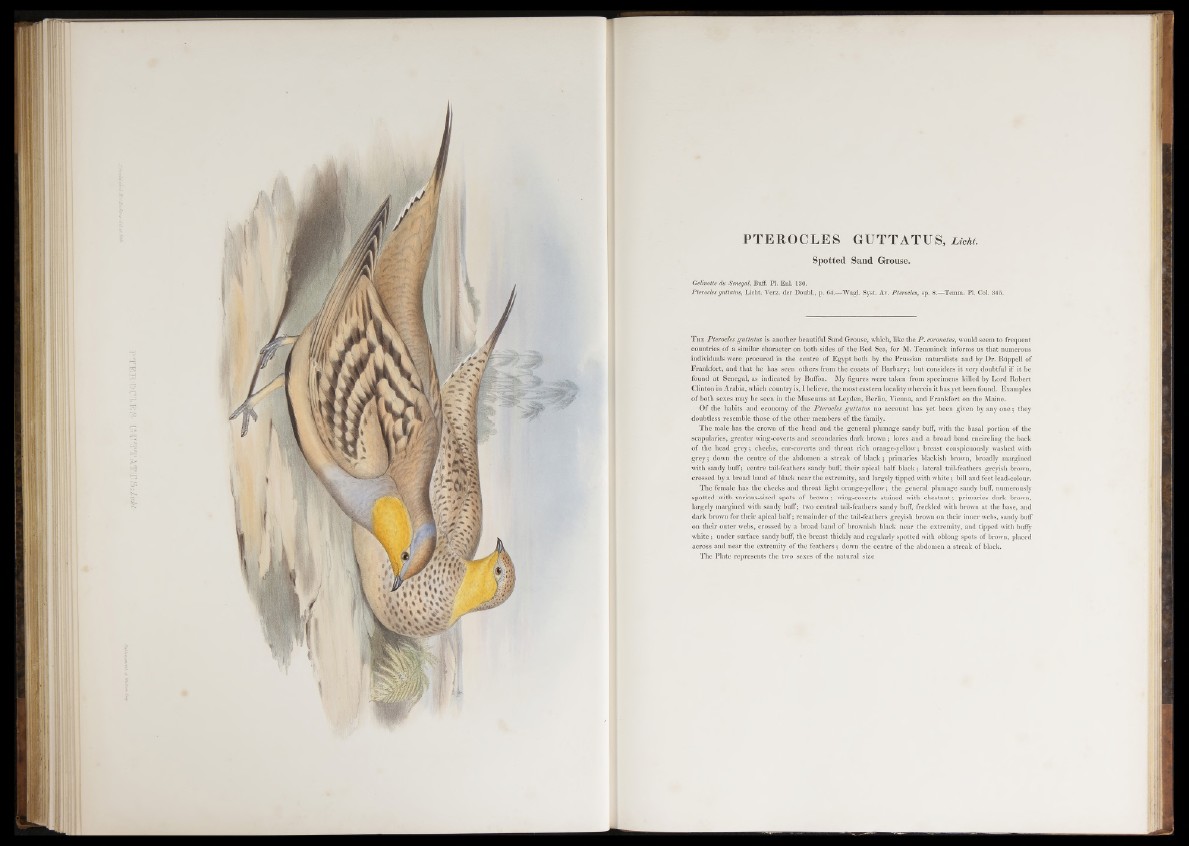
PTEROCLES GUTTATUS , Licht.
Spotted Sand Grouse.
Gelinotte du Senegal, Buff. PL Enl. 130.
Pterocles guttatus, L i c h t . Verz. der Doubl., p. 64.—Wagl. Syst. Av. Pterocles, sp. 8.—Temm. Pl. Col. 345.
T he Pterocles guttatus is another beautiful Sand Grouse, which, like the P . coronatus, would seem to frequent
countries of a similar character on both sides of the Red Sea, for M. Temminck informs us that numerous
individuals were procured in the centre o f Egypt both by the Prussian naturalists and by Dr. Riippell of
Frankfort, and that he has seen others, from the coasts of Barbary; but considers it very doubtful if it be
found at Senegal, as indicated by Buifon. My figures were taken from specimens killed by Lord Robert
Clinton in Arabia, which country is, I believe, tbe most eastern locality wherein it has yet been found. Examples
o f both sexes may be seen in the Museums at Leyden, Berlin, Vienna, and Frankfort on the Maine.
Of the habits and economy of the Pterocles guttatus no account has yet been given by any one; they
doubtless resemble tbose of the other members of the family.
The male has the crown of the head and the general plumage sandy buff, with the basal portion of the
scapularies, greater wing-coverts and secondaries dark brown; lores and a broad band encircling the back
of the head grey; cheeks, ear-coverts and throat rich orange-yellow; breast conspicuously washed with
grey; down the centre of the abdomen a streak of black; primaries blackish brown, broadly margined
with sandy buff; centre tail-feathers sandy buff, their apical half black; lateral tail-feathers greyish brown,
crossed by a broad band of black near the extremity, and largely tipped with white; bill and feet lead-colour.
The female has the cheeks and throat light orange-yellow; the general plumage sandy buff, numerously
spotted with various-sized spots of brown; wing-coverts stained with chestnut; primaries dark brown,
largely margined with sandy buff; two central tail-feathers sandy buff, freckled with brown at the base, and
dark brown for their apical half; remainder o f the tail-feathers greyish brown on their inner webs, sandy buff
on their outer webs, crossed by a broad band of brownish black near the extremity, and tipped with buffy
white; under surface sandy buff, the breast thickly and regularly spotted with oblong spots of brown, placed
■across and near the extremity of the feathers; down the centre o f the abdomen a streak of black.
The Plate represents the two sexes of the natural size